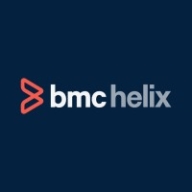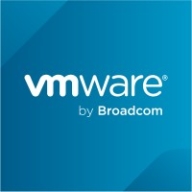


BMC TrueSight Server Automation and Spring Cloud both compete in the realm of IT management software, with BMC focusing on server management and automation, and Spring Cloud specializing in microservices framework. Spring Cloud seems to have the upper hand due to its flexibility and developer-friendly environment.
Features: BMC TrueSight Server Automation provides patch management, compliance, and security automation. Spring Cloud offers service registration, configuration management, and intelligent routing.
Room for Improvement: BMC TrueSight Server Automation needs to simplify its complexity, enhance performance, and address its learning curve. Spring Cloud requires better documentation, more extensive out-of-the-box integration options, and improved guidance and support.
Ease of Deployment and Customer Service: BMC TrueSight Server Automation demands a more intricate setup, significant resource allocation, and has a steeper learning curve. Spring Cloud enjoys simpler deployment, better cloud-native integration, but requires improved customer service responsiveness and assistance.
Pricing and ROI: BMC TrueSight Server Automation involves higher initial setup costs and slower ROI due to complexity and deployment time. Spring Cloud has a lower cost of entry and faster ROI due to ease of deployment and flexibility, but users note gaps in support and documentation.
| Product | Market Share (%) |
|---|---|
| Microsoft Intune | 9.4% |
| BMC TrueSight Server Automation | 3.1% |
| Spring Cloud | 1.4% |
| Other | 86.1% |



| Company Size | Count |
|---|---|
| Small Business | 116 |
| Midsize Enterprise | 46 |
| Large Enterprise | 152 |
| Company Size | Count |
|---|---|
| Small Business | 2 |
| Midsize Enterprise | 5 |
| Large Enterprise | 15 |
Microsoft Intune provides centralized management of mobile devices and applications, ensuring security, compliance, and productivity through integration with Microsoft services like Microsoft 365 and Azure Active Directory.
Organizations use Intune for managing mobile devices and applications, enhancing security and compliance across platforms. With features like single sign-on, conditional access, and zero-touch deployment via Autopilot, it facilitates efficient operations. Intune's scalability, easy enrollment, and capabilities such as remote wipe support diverse device management, offering robust data protection and efficient operation. Despite its features, improvement areas include reporting, compatibility with non-Microsoft devices, and better support for macOS and Linux devices.
What are the key features of Microsoft Intune?
What benefits should users look for in reviews?
In industries such as finance, healthcare, and education, Microsoft Intune is implemented to ensure secure and compliant device management. Companies leverage its capabilities to deploy security policies and manage both corporate-owned and BYOD environments, facilitating a unified approach to data protection and compliance.
BladeLogic Server Automation allows you to quickly and securely provision, configure, patch, and maintain physical, virtual, and cloud servers.
· Threat remediation: Combine with BMC SecOps Response Service to link vulnerabilities to identified patches and create a remediation plan
· Compliance: Integrates role-based access control, pre-configured policies for CIS, DISA, HIPAA, PCI, SOX, NIST, and SCAP, documentation, and remediation
· Provisioning: Supports unattended installs and image-based, script-based, or template-based provisioning
· Configuration: Consistently manage change and configuration activities across a broad range of server environments with one tool
· Reporting: Assess change impact or complete an audit using multiple dashboard views
· Patching: Supports and follows maintenance window guidelines to ensure timely delivery of patches
Spring Cloud simplifies distributed, microservice-style architecture by implementing proven patterns to bring resilience, reliability, and coordination to your microservices. Using Spring Cloud Services, Pivotal Cloud Foundry customers have a turnkey, secure solution for production operations of this coordination infrastructure - service registry, config server, and circuit breaker dashboard.
We monitor all Configuration Management reviews to prevent fraudulent reviews and keep review quality high. We do not post reviews by company employees or direct competitors. We validate each review for authenticity via cross-reference with LinkedIn, and personal follow-up with the reviewer when necessary.